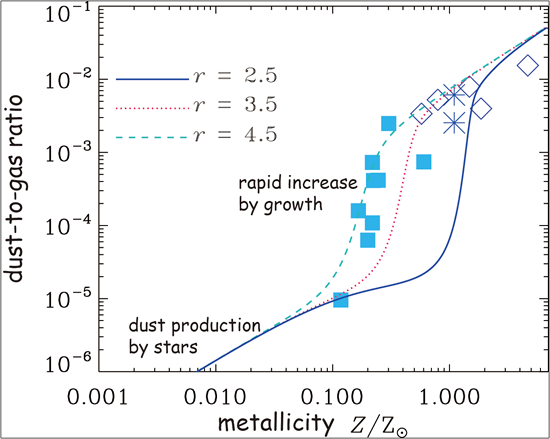|
圖片來源: Hiroyuki Hirashita and Tzu-Ming Kuo

The figure above demonstrates how the dust-to-gas ratio in a galaxy evolves with increasing metallicity. In the low-metallicity regime, the dust is predominantly supplied by stars, so the dust-to-gas ratio increases in proportion to metallicity. Above a certain metallicity, the dust-to-gas ratio rapidly increases because the dust growth in the interstellar medium becomes more and more important, because interstellar dust growth occurs efficiently in metal-rich interstellar environments. The rapid increase is indeed consistent with the observational data of nearby galaxies.
|
 asiaa.sinica.edu.tw 媒體連絡: epo
asiaa.sinica.edu.tw 媒體連絡: epo asiaa.sinica.edu.tw
asiaa.sinica.edu.tw